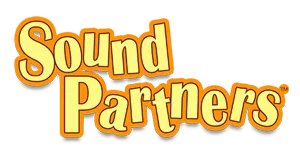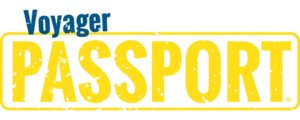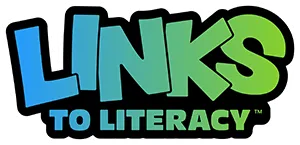How to Teach Letter Recognition to Boost Literacy and Learning
Enhancing students' letter recognition skills through hands-on tools and interactive strategies is paramount for literacy development. By integrating solutions such as printable worksheets, flashcards, and magnetic letters into engaging learning activities, educators can effectively captivate young learners. Moreover, acknowledging the roles of phonemic awareness and phonics ensure a comprehensive approach to letter recognition instruction. Voyager Sopris Learning's evidence-based programs can be used to deliver effective instruction, including explicitly teaching letter recognition.
Mastering letter recognition is a significant milestone in the educational journey of pre-school and K–3 students because it lays the groundwork for advanced literacy skills. To ensure all students achieve proficiency in reading, writing, and language, educators can implement the practical strategies and tools discussed in this article.
Building Letter Recognition Skills With Hands-On Tools
One of the most effective ways to build letter recognition skills is to incorporate hands-on learning in early education curriculum. These tactile and interactive tools will assist and engage young learners:
- Printable Worksheets: Printable worksheets can be used to focus on letter formation, letter-sound correspondence, and letter matching.
- Word Cards: Word cards can be used for letter-matching games, vocabulary reviews, and interactive spelling activities.
- Magnetic Letters: Magnetic letters can be used for creating words and letter-sound correspondence activities.
- Crayons, Playdough, and Fine Motor Skills: Crayons and playdough can be used by students to form letters. This will also contribute to the development of fine motor skills.
- Whiteboards: Whiteboards can be used for interactive letter formation exercises, spelling practice, and collaborative learning opportunities where students can showcase their letter recognition skills.
Interactive Learning Activities for Letter Recognition
Another way to teach letter recognition is to utilize hands-on tools in interactive activities. These activities can include letter-matching games, letter-formation activities, and kinesthetic techniques.
- Letter-matching games can be facilitated through puzzles, flashcards, or digital applications. Students can be encouraged to match uppercase letters with lowercase letters or arrange letter cards alphabetically. Additionally, teachers can create interactive games where students match objects or images with the corresponding initial letter, creating connections between letters and real-world contexts.
- Letter-formation activities can be facilitated through worksheets with dotted lines for tracing, interactive whiteboards for digital tracing exercises, or tactile materials like sand trays, shaving cream, or clay for a sensory experience.
- Kinesthetic techniques can be facilitated through gross motor activities such as instructing students to use their bodies to create letters, playing alphabet hopscotch, or leading sing-along songs that spell words.
Mastering Uppercase and Lowercase Letters
Understanding the relationship between uppercase and lowercase letters is crucial for developing strong reading, writing, and pattern recognition skills. However, guiding students through this foundational process can be challenging, because it requires refining their visual processing abilities.
To support students, educators should begin by introducing uppercase letters, which are generally easier to distinguish and write. Using an environmental print (letters seen in everyday life on signs, labels, logos) is an effective way to show children the differences between uppercase and lowercase letters. Keep in mind that certain letters like "M" and "W" can pose difficulties due to their similar stroke structures.
Incorporating multisensory activities into lessons can greatly enhance learning outcomes. For example, games like I-Spy effectively engage students in identifying both uppercase and lowercase letters within their everyday environment. Additionally, activities such as board games focused on letter-sound matching or using magnetic letters provide tactile and auditory stimulation, reinforcing letter recognition. Starting with familiar letters, such as those in students' names, can also personalize the learning experience and make it more effective.
Integrating Phonemic Awareness and Phonics
Mastering phonemic awareness and phonics is essential for the acquisition of strong literacy skills. It is imperative students learn to recognize letters and their corresponding sounds to decode words and build reading fluency. Achieving automaticity in phonics is the cornerstone of effective reading instruction.
Teachers should immerse students in multisensory learning experiences that incorporate auditory, visual, and kinesthetic activities. These can include:
- Phonemic Awareness Activities: Adding phonemic segmentation, blending, and manipulation activities into lessons provides a robust framework for reinforcing letter-sound associations in early literacy education. For phonemic segmentation, educators can present students with simple words like "cat" and guide them to identify each individual sound (/k/ - /a/ - /t/) by tapping out or counting the sounds. Blending activities involve displaying word cards with phonetically regular words (e.g., "dog") and prompting students to blend the sounds (/d/ - /o/ - /g/) to read the complete word aloud. Additionally, manipulation activities can include tasks where students change one sound in a word to create a new word (e.g., changing "cat" to "bat" by substituting the initial sound).
- Phonics with Letter Formation: Integrating phonics activities with letter formation exercises lays a solid foundation for early literacy skills development. Educators can guide students through hands-on activities that reinforce letter-sound correspondences while also practicing proper letter formation techniques. For example, when introducing the letter "a" students can trace the letter's shape while simultaneously saying its corresponding sound (/a/). Additionally, educators can provide opportunities for students to practice writing the letter "a" in various contexts, such as in sand trays, with finger painting, or using interactive digital tools. As students progress, educators can incorporate blending exercises where students form words using the letters they have learned, reinforcing both phonics knowledge and handwriting skills.
- Alphabet Activities for Phonics Reinforcement: Incorporating alphabet-focused activities into phonics instruction reinforces letter-sound associations and promotes early literacy development. Educators can engage students in interactive exercises that combine letter recognition with phonics concepts. For instance, when introducing the letter "B," students can participate in activities like sorting objects that begin with the /b/ sound and tracing the letter "B" while verbalizing its corresponding sound (/b/). Additionally, educators can organize alphabet scavenger hunts where students search for items that represent each letter of the alphabet, emphasizing phonics connections as they identify initial sounds. Furthermore, educators can utilize alphabet-themed games such as letter bingo or alphabet puzzles to reinforce letter-sound relationships.
Strategies for Teaching Letter Sounds and Names
Recognizing the symbolic nature between letter sounds and letters is fundamental for language acquisition and literacy development—and it goes beyond rote memorization. To effectively teach letter sounds and names, teachers should employ hands-on activities that produce genuine comprehension. These can include:
- Connecting Letter Sounds With Everyday Objects: Educators can demonstrate letter sounds by connecting them with familiar everyday objects to make them easily recognizable and memorable for young learners. For instance, associating the letter "B" with a ball on the playground or a banana in the cafeteria.
- Phonetic Alphabet Activities: Alphabet treasure hunts provide learners with a list of items to find that correspond to various letter sounds.
- Using Alphabet Songs as Mnemonic Devices: Catchy tunes and alphabet songs can create a memorable association between the visual representation of letters and corresponding sounds.
- Gross Motor Skills Games: Letter-sound correspondence can be extended to recess time by allowing students to use chalk to create a hopscotch game of letter recognition and verbalization.
- Teaching Letter Names in Context: While letter sounds are crucial, teaching students letter names also supports their literacy development. One effective strategy is to present words with missing letters and prompt students to fill in the blanks. This activity encourages students to identify both the letter name and its corresponding sound, reinforcing the connection between letters, sounds, and word formation.
Final Thoughts
Mastering letter recognition is a foundational step in developing literacy skills. As experts in reading, writing, and math interventions, Voyager Sopris Learning® provides educators with effective and engaging solutions to enhance instruction, including explicitly teaching letter recognition. Sound Partners, LINKS to Literacy™, and Voyager Passport® are reading programs that incorporate many of these hands-on activities for letter recognition including letter tiles, sound cards, whiteboards, and more. Learn more about these and other reading solutions here.


